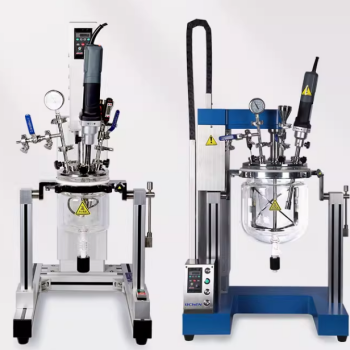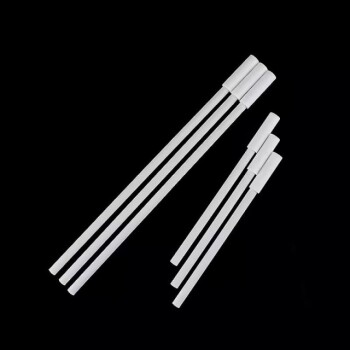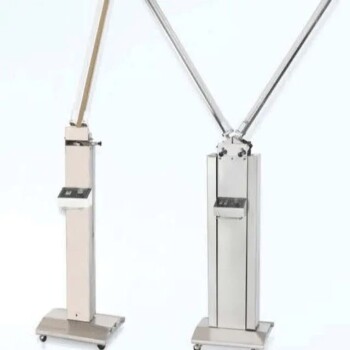To preserve its integrity and performance, a carbon fiber brush must avoid contact with three specific categories of chemicals: strong oxidizing agents, strong acids, and strong alkaline substances. These materials are highly corrosive and can chemically attack both the delicate carbon fibers and the metal components that hold the brush together, leading to irreversible damage.
The core vulnerability of a carbon fiber brush is not physical, but chemical. While durable, its effectiveness depends on the structural integrity of both its carbon filaments and metal fixings, both of which are susceptible to degradation from aggressive chemical agents.

The Chemical Vulnerabilities of a Carbon Fiber Brush
Understanding why certain chemicals are harmful is crucial for proper care. The damage is not superficial; it's a fundamental breakdown of the tool's components at a molecular level.
The Threat from Strong Acids and Alkalis
Strong acids (like hydrochloric or sulfuric acid) and strong alkalis (like sodium hydroxide) are extremely corrosive to metals.
Most carbon fiber brushes use a metal wire or ferrule, often made of steel or aluminum, to secure the fibers. Contact with these chemicals will rapidly corrode these fixings.
Once the metal structure fails, the brush will begin to shed its fibers, rendering it completely useless for any precision task.
The Impact of Strong Oxidizing Agents
Strong oxidizing agents, such as hydrogen peroxide, bleach, or certain peroxides, pose a direct threat to the carbon fibers themselves.
These substances work by stripping electrons from other materials, a process that breaks down chemical bonds. An oxidizer can degrade the strong carbon-carbon bonds that give the fibers their strength.
This chemical attack makes the fibers brittle and weak, destroying their unique cleaning and anti-static properties.
Why Both Components Matter: Fibers and Fixings
A brush is a complete system. The failure of one component means the failure of the entire tool.
Corrosion of the metal fixings leads to fiber loss, while degradation of the fibers themselves eliminates the brush's primary function. Protecting both is essential.
Common Pitfalls to Avoid
A false sense of security can be the biggest risk to your tool. Carbon fiber's reputation for strength can lead to careless handling around chemicals.
Misinterpreting "Chemical Resistance"
Carbon fiber is celebrated for its resistance to many common solvents, such as isopropyl alcohol or acetone. This is why it's popular for cleaning electronics and records.
However, this resistance does not extend to highly reactive, corrosive chemicals. Never assume the brush is indestructible.
Forgetting the Other Materials
The brush is more than just carbon. The handle is often made of plastic or wood, and the ferrule is metal.
A chemical that is safe for the carbon fibers might still damage the handle or the adhesive holding the brush together. Always consider the entire tool.
Best Practices for Care and Longevity
Your approach to cleaning and storage will determine the lifespan of your carbon fiber brush. Follow these guidelines to ensure it remains a precise and effective tool.
- If your primary focus is routine cleaning (e.g., vinyl records, camera lenses): Stick to dry use or, if necessary, a minimal amount of a neutral solvent like high-purity isopropyl alcohol.
- If your primary focus is industrial or laboratory use: Always cross-reference your chemicals. Assume any substance labeled as a strong acid, base, or oxidizer is incompatible unless proven otherwise.
- If your goal is to clean the brush itself: Use distilled water and allow it to air dry completely. Avoid all soaps and detergents, as they can leave residue or contain unknown alkaline agents.
Protecting your brush from these specific chemical threats is the key to preserving its function and value.
Summary Table:
| Chemical Category | Examples | Effect on Brush |
|---|---|---|
| Strong Oxidizing Agents | Hydrogen Peroxide, Bleach | Degrades carbon fibers, making them brittle |
| Strong Acids | Hydrochloric Acid, Sulfuric Acid | Corrodes metal fixings, leading to fiber loss |
| Strong Alkaline Substances | Sodium Hydroxide | Damages metal components and adhesives |
Ensure your laboratory equipment remains precise and durable. KINTEK specializes in high-quality lab equipment and consumables, including chemical-resistant tools designed for demanding environments. Protect your investments and enhance your lab's efficiency—contact our experts today to find the right solutions for your needs!
Visual Guide

Related Products
- Lab Internal Rubber Mixer Rubber Kneader Machine for Mixing and Kneading
- High Performance Lab Homogenizer for Pharma Cosmetics and Food R&D
- Custom PTFE Teflon Parts Manufacturer for PTFE Stirring Bar Recovery Rod
- Custom PTFE Teflon Parts Manufacturer Corrosion Resistant Cleaning Rack Flower Basket
- Laboratory Disc Rotary Mixer for Efficient Sample Mixing and Homogenization
People Also Ask
- What is the mixing process of rubber? Master the Stages for Superior Compound Quality
- What is the process of making rubber sheets? From Raw Rubber to Engineered Performance
- What is the process of rubber by pyrolysis? A Step-by-Step Guide to Converting Waste Rubber into Valuable Resources
- How do you recycle rubber waste? Unlock the 3 Key Methods for Tire & Rubber Recycling
- What is the difference between a shaker and a vortex? Choose the Right Mixer for Your Lab Workflow



















